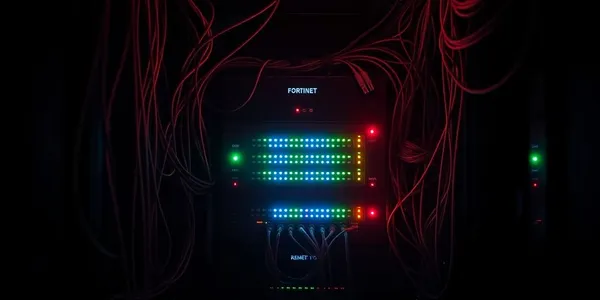A recent discovery has revealed a significant security flaw in over 16,000 Fortinet firewalls, where attackers exploited a backdoor that remained even after firmware patches were applied. This incident underscores the critical need for organizations to rethink their cybersecurity strategies beyond just patching vulnerabilities.
Key Takeaways
- Over 16,000 Fortinet firewalls were compromised through a persistent backdoor.
- Attackers gained unauthorized access to sensitive system files without detection.
- Patching alone is insufficient; organizations must adopt a comprehensive security approach.
The Discovery of the Backdoor
The backdoor was found to exploit a subtle aspect of the Fortinet system, specifically through symbolic links placed in language file folders. These links allowed attackers to access sensitive root-level files via the SSL-VPN web interface, effectively bypassing traditional security measures.
Implications for Businesses
The implications of this security breach are severe:
- Exposure of Sensitive Data: Attackers had read-only access to critical configuration files, including VPN and admin data.
- Reputational Damage: If customer-facing infrastructure is compromised, it can lead to a loss of trust.
- Compliance Risks: Organizations may face legal repercussions depending on their industry regulations (e.g., HIPAA, PCI).
- Loss of Control: There is a risk of losing control over device configurations and trust boundaries.
Remediation Steps
In response to this vulnerability, organizations are advised to implement a targeted remediation plan that includes:
- Scope Your Environment: Identify all Fortinet devices in use and check firmware versions.
- Patch Firmware: Update to the latest FortiOS versions to eliminate the backdoor.
- Post-Patch Validation: Confirm the firmware version and ensure SSL-VPN functionality.
- Credential Hygiene: Reset passwords for all admin accounts and invalidate current VPN sessions.
- System Audit: Review admin accounts for unauthorized users and validate configuration files.
- Monitoring and Detection: Enable logging on SSL-VPN and admin interfaces to detect unusual activities.
- Harden SSL-VPN: Limit external exposure and require multi-factor authentication for VPN access.
The Bigger Picture
This incident serves as a stark reminder that patching is only one aspect of a robust cybersecurity strategy. Attackers are increasingly sophisticated, often burrowing into systems and maintaining access long after vulnerabilities are patched. Organizations must adopt a mindset that assumes attackers may already be present, necessitating ongoing vigilance and proactive security measures.
Conclusion
The Fortinet firewall incident highlights the need for a paradigm shift in how organizations approach cybersecurity. Relying solely on patching is no longer sufficient; a comprehensive strategy that includes persistent threat detection and proactive monitoring is essential to safeguard sensitive data and maintain trust in digital infrastructures.







